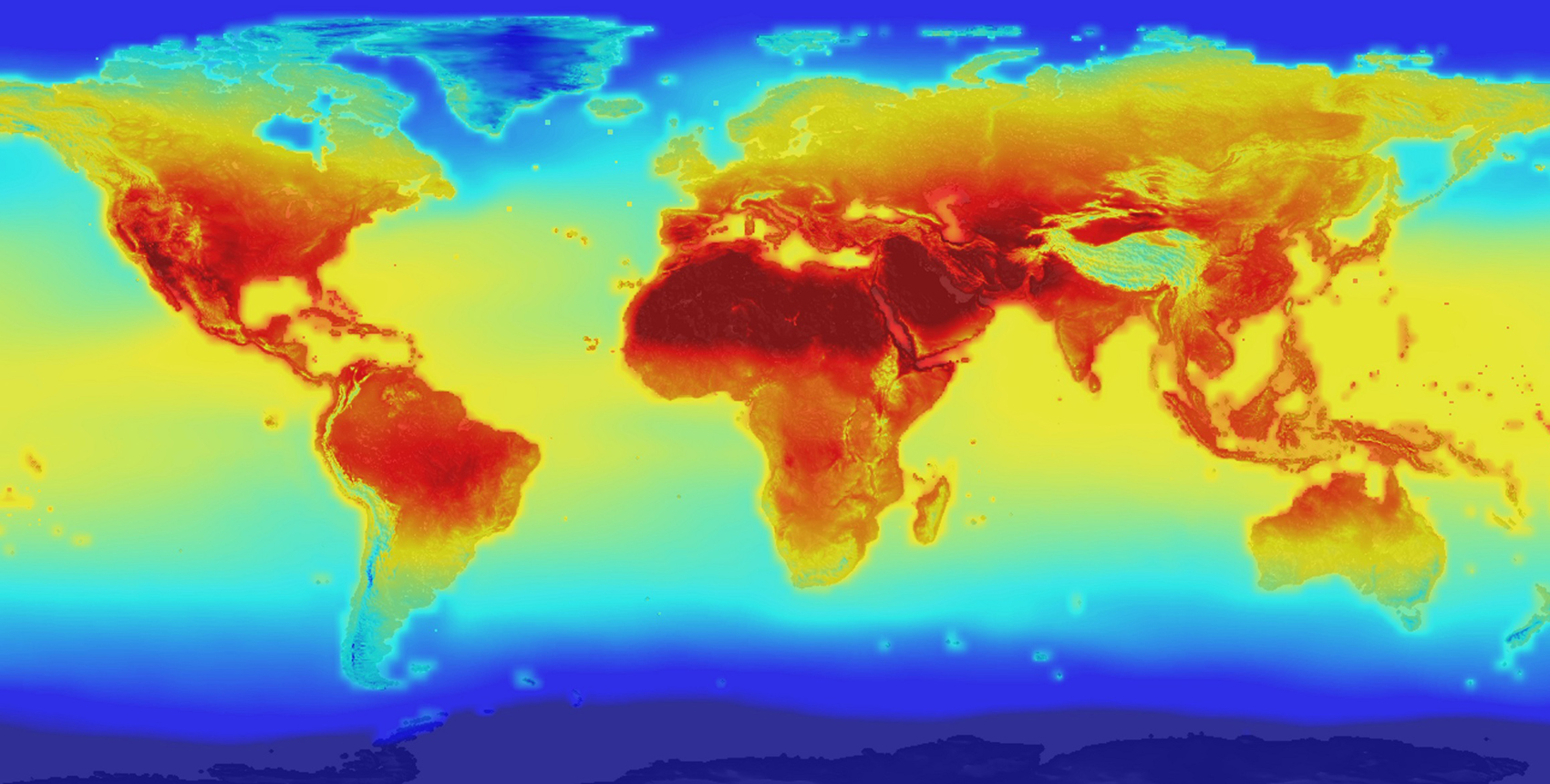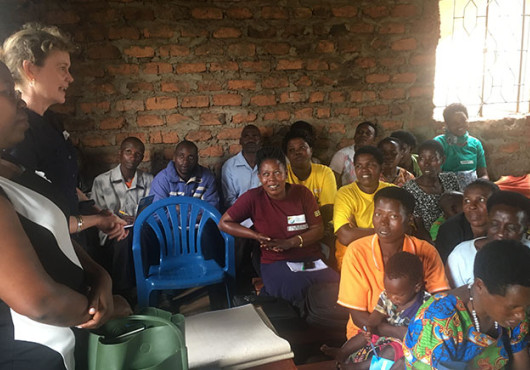
The average global surface temperature on Earth has risen by approximately 1.1 degrees Celsius (2 degrees Fahrenheit) since the beginning of industrialization in the late 19th century, with most of the change coming since 1975, according to the latest report of the United Nations’ Intergovernmental Panel on Climate Change.
One degree may not sound like much, but that seemingly small change is big enough to drive increasingly frequent and more powerful storms, crop-withering droughts, massive wildfires that spew dangerous smoke and particulate matter across hemispheres, and deadly heat waves in some of the world’s most populous cities, according to Jason Hickel.
Hickel, a professor in the Institute for Environmental Science and Technology, Autonomous University of Barcelona, spoke on a recent panel in the third of a series of webinars celebrating 150 years of social medicine at Harvard Medical School this year.
Already, 30 million people around the globe are displaced each year because of global climate change, said Hickel, who is also a visiting senior fellow in the International Inequalities Institute, London School of Economics.
“For these people, the climate apocalypse is not some abstract future possibility,” he said. “It’s already here.”
Hickel was joined on the panel by Maxine Burkett, professor of law at the William S. Richardson School of Law, University of Hawaii, and visiting professor of global health and social medicine in the Blavatnik Institute at HMS.
Gene Richardson, assistant professor of global health and social medicine at HMS and Paul Farmer, Kolokotrones University Professor of Global Health and Social Medicine at HMS and head of the Department of Global Health and Social Medicine, moderated the discussion.
The panelists explored the social, legal, economic, and policy context for the climate crisis, which they described as an “existential threat” to human health as they provided historical context for the crisis. They also discussed potential frameworks for addressing climate change and for ameliorating the inequities that they said are both cause and consequence of global warming.
Healthy environment
According to the U.S. Centers for Disease Control and Prevention, the changing global climate is having a direct impact on human health, including “increased respiratory and cardiovascular disease, injuries and premature deaths related to extreme weather events, changes in the prevalence and geographical distribution of food- and water-borne illnesses and other infectious diseases, and threats to mental health.”
The World Health Organization estimates that climate change will cause approximately 250,000 excess deaths per year from malnutrition, malaria, diarrhea, and heat stress between 2030 and 2050.
The negative effect of the increase in specific diseases is amplified among displaced populations and in nations with already overburdened health systems, the panelists said. These nations are currently experiencing some of the worst consequences of increased temperatures, and rising seas will mean further loss of homes and livelihoods.
Disruptions to the normal cycles of rain, snow, and dry weather have already begun to cause crop failures and subsequent malnutrition. Death tolls from extreme heat waves are rising among the most economically disadvantaged in the largest cities of South Asia and elsewhere.
The resulting interconnected health, social, economic, political, and legal crises triggered by climate change tend to grow worse as they cascade into one another, the speakers said.
As dire as the current situation and the short-term forecast for the next decade or two are, these challenges pale in comparison to what the future may hold if warming isn’t stopped soon, Hickel said, noting that current international agreements, government policies, industrial practices, and consumption patterns have the world on track for at least 2.7 degrees of warming within a few decades.
At that point, he said, the latest scientific studies estimate that sea levels will have risen by 1 to 2 meters, 30 to 50 percent of species will have gone extinct, staple crops will fail in many regions, and 1.5 billion people will be displaced because their homelands will be too hot to sustain human life.
Patterns of inequity
Noting that racism and environmental degradation are often intertwined as mutual accelerants, Burkett referred to a recent study of 108 urban areas across the U.S., which found that historically redlined neighborhoods—the only areas in many cities where Black families were able to get loans to buy homes, and areas still predominantly populated by Black families—average 5 degrees Fahrenheit (nearly 3 degrees Celsius) warmer than nonredlined neighborhoods, with some being nearly 13 degrees Fahrenheit (more than 7 degrees Celsius) warmer.
Those kinds of inequities are being echoed and amplified on a global scale. Around the world, the worst effects of the warming climate are being felt in the global south, particularly in formerly colonized nations, the panelists said. Pacific Island nations are already disappearing beneath rising seas and massive cyclones and hurricanes are devastating cities and nations across the tropics.
These inequities are exacerbated by the global north’s production of more than 90 percent of the greenhouse gases driving global warming, Hickel noted.
From both an ethical and practical standpoint, the panelists said, the nations that produce the greatest amount of greenhouse gases—which are also the nations that have accumulated the most wealth through industrialization—should take the greatest share of responsibility for addressing the crisis.
Fixing the problem could include adopting economic policies in the global north that would replace an emphasis on economic growth with an emphasis on lowering consumption of resources and production of greenhouse gases.
This kind of commitment to social justice, equity and well-being, with a goal of bringing global economies into harmony with the natural world, could free up resources in the global south that could be utilized for limited growth there, prioritizing spending on health, education, and other sectors that promote environmentally friendly, sustainable human development, Hickel said.
A more equitable approach might also include asking wealthier nations to take responsibility for providing immigration options and resources for the populations that will be displaced by the climate crisis in a manner and to a degree that would be commensurate with these nations’ contribution to the climate crisis, Burkett said.
A way forward
The political and technical challenges around slowing global warming and easing the suffering of those already affected by climate change are significant, and overcoming them will require new ways of thinking, the panelists said.
They suggested that those interested in creating solutions to the climate crisis might find inspiration in the great social movements of the last two centuries, such as the movement to abolish the slave trade, anticolonialist independence movements, and the U.S. civil rights movement. They also noted that some current social movements have already begun discussing climate change, the environment, and social and economic equity in interesting new ways.
The Department of Global Health and Social Medicine traces its roots back to the HMS Department of Hygiene. From those earliest days, Professor of Hygiene George Derby, the founding director of the department, emphasized the connection between environmental conditions and population health.
Derby also emphasized society’s responsibility for promoting equity and justice as a means of promoting health, said Scott Podolsky, HMS professor of global health and social medicine and director of the Center for the History of Medicine in the Countway Library of Medicine, who has served as series moderator for the department’s symposia this year.
In a discussion following the panelists’ presentations, Farmer asked what specific role physicians and other practitioners of social medicine can play in responding to the climate crisis, and how best to integrate work on climate change and other aspects of environmental degradation with their work in global health.
Burkett said the first step is to stop thinking of the environment as somehow separate from everything else, because it is inextricably interwoven into every aspect of life.
“The intellectual technology to do this already exists,” she said, noting that the social medicine approach, which embraces multiple disciplines and tries to understand health in the context of history and the greater biosocial environment, provides a good foundation for this kind of thinking.
When we work for environmental justice, equity, and a healthy planet, Burkett said, invoking the words and worldview of Indigenous leaders from Hawaii and around the Pacific who have inspired her, “We are not defending nature, we are nature defending itself.”








